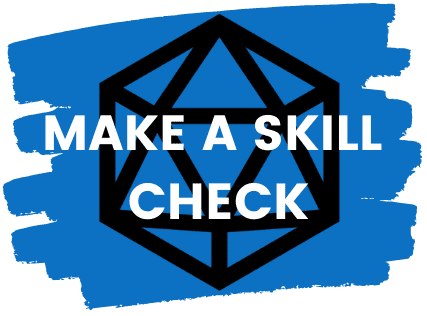On the go? Listen to the audio version of the article here:
Pets are among the most diverse and difficult features to represent in a roleplaying game, as they can range from having a tiny mouse that inconsequentially nibbles on a druid’s hair to a dracolich that the party paladin enslaved. As such, both Dungeon Masters (DMs) and players can struggle with implementing a vision for them. Today, we are going to address this roleplaying subsystem in 5e and provide a constructive way to integrate pets. But first:
Pet rules fall on an “NPC-Feature” spectrum, acting as an NPC run by the DM or as an extension of the PC, which is determined by the DMs discretion. Control could develop over time using a system of training hours that forms a greater bond with the pet.
We’ll explore these situations in further detail so that you can decide what best suits your situation.

Table of Contents
Pet Basics
Pets can be thought of in two ways. One way is to treat them as NPCs – individual semi-sentient entities that the players interact with and the DM controls.
If a player adopts an owlbear cub and wants to raise it, that player’s interaction with the animal is going to be similar to interacting with a character, albeit an adorable, ferocious, and unpredictable one.
Alternatively, you can think about pets as features – integrated parts of a Player Character (PC). A beast master’s animal companion is an extension of their corresponding PC, being controlled directly by them and also a significant part of their powers and personality. Even during “social interactions”, an animal companion’s personality is more a reflection of their PC than an independent creature.
These two perspectives are two ends of a spectrum between DM and player control. On one end, you have a pet that is more or less part of the game world that the DM entirely controls, and on the other, the pet is integrated almost completely in a PC that the corresponding player controls.
You’ll find that there’s a spectrum of rules that address both of these situations – and many in between.
Rules for Pets as NPCs
Pets as NPCs are simple to manage – you just treat them as a character that is moving with the party.
If they are intelligent and understand language (e.g., a baby dragon), they are literally just NPCs – the players can interact and coordinate with them by talking and controlling them through game mechanic skills, like persuasion and deception. To interact with them, the PC must convince the pet to aid as they would anyone else, and the DM dictates the results.
The only real major hiccup is that a lot of pet-like NPCs aren’t intelligent enough and don’t understand speech. However, this is the exact case that the animal handling skill is used for.
Animal handling is meant for communicating intent, desire, and commands non-verbally, and it serves as the animal equivalent to persuasion. You can even make checks against a creature’s passive insight with animal handling.
Not directly related, but this post addresses passive perception and passive skills more generally.
The tricky thing with animal handling checks is setting reasonable Difficulty Classes (DCs). In rule instances, there’s an implicit hierarchy concerning which creatures are difficult to interact with, most commonly referenced in spells.

Factors Affecting Pet-handling Difficulty
Vaguely in order from most-to-least important factors for communicating with animals:
- Beasts are easier to interact with than non-beasts
- Unaligned creatures are easier than aligned ones
- Less powerful (lower CR) creatures are harder to interact with than higher CR
- Less intelligent creatures are harder than more intelligent ones
The beast consideration is most important. Almost all creature interactions in 5e heavily favor interacting with beasts. This is because they have a limited scope to their capabilities, are mostly unaligned, and from an RP perspective, are more natural to interact with. To see this precedent, simply look at a few spells:
- Animal Friendship is 1st level, and Charm Monster is 4th level
- Dominate Beast is 4th level, and Dominate Monster is 8th level
- Polymorph is 4th level, and True Polymorph is 9th level
As a DM setting animal handling DCs, consider adding +5 to a DC if the entity is not a beast. Since the above factors stack, the most difficult penalties are for powerful, unintelligent non-beasts whose alignment contradicts the proposed action.
Example: Trying to influence a Hezrou (chaotic evil demon, 5 INT; CR 8) to save a puppy from drowning. Highly improbable.
Looking to challenge your players?
Puzzles and Riddles can be tricky! Too easy and they’re pointless; Too hard and it’s pure frustration. What is a DM to do?
Well, our friends over at Dungeon Vault have an assortment of puzzles, riddles, and tokens to enhance your gaming experience. They even have a murder mystery and a political intrigue system!
For easy-to-use resources for any D&D game, check out the selections at Dungeon Vault!
Rules for Pets as Features
Pets as features are also relatively simple; their abilities are generally outlined within the explicit features. I’ll go over a few examples to show how powers and capabilities scale with varying power investment.
Starting with an example of a minor feature, we have “pets” through Find Familiar. For the cost of knowing a single spell (often a subset of a racial feature, feat, or class level), a player can get essentially a CR 0 tiny beast that always obeys them and can communicate telepathically within 100ft. They also can deliver touch spells.
As a moderate feature (i.e., one that occupies the power equivalent of a feat or class level) players have access to features like Pact of the Chain (PHB, pg. 107) or the Find Steed spell. These creatures have slightly higher CR levels (roughly 1/4), and some have added utility like invisibility for themselves and/or strength enough to carry the player.
Finally, there are major features that span multiple levels. The most notable “major” feature set is the beast master for the ranger, whose stats range from a CR ½ creature at first to something closer to a CR 1 or 2 beast by the end of the subclass progression.
How Should You Command your Pet?
In all the above cases, the pet directly follows the commands of the player without checks, and in certain cases, the player can take direct control of the pet.
I’m discussing these examples to demonstrate what it looks like to have a “reasonable” pet that completely follows the PC’s desires. Again, we see some of the dimensions from the Pets as NPCs (including the beast factor that curbs potential features).
A permanent pet is often able to:
- Serve as competent scouts
- Be highly maneuverable
- Seamlessly communicate
- Have combat capabilities up to CR 1 after some investment
- Possess some weak utility after some investment (like magical-sensing, personal invisibility for the pet, or acting as a mount)
Should pets be more under the DMs control or Players?
The above examples demonstrate the two extremes of pet rulesets, and it’s important for both DMs and players to negotiate where a given pet lands on that spectrum so that power level and autonomy boundaries are set.
Once you develop an intuition for these boundaries, it is easier to make rulings for particular, often unique, situations.
For example, a player wants to play as a necromancer whose hand was chopped off, and they reanimated it as a crawling claw (which serves as a normal hand when it isn’t crawling).
A crawling claw is a CR 0 creature. While it is undead, capabilities-wise, it is about equivalent to a rat (CR 0 Beast). Thus, house-ruling that it is a feature that the PC entirely controls would be conceivable for minimum investment (i.e., it replaces the wizard’s familiar).
Since this is in the middle of the DM-Player control spectrum…
Are there rules that allow a player to train with a creature so that they’re able to coordinate consistently?
The answer is “kind of”.
There is no comprehensive set of rules for every conceivable “trained” interaction (such a set would be endless), though there are some for common tasks.
The mounted rules and the Commanding Strike Maneuver from the battle master come to mind. There isn’t a limit to which creatures commanding strike can be applied, but it provides features for specific applications (e.g., redirecting damage, staying on top of the creature, dictating movement, dictating an attack).
A player could easily take these features to simulate an idea: training a pit bull to pounce on people could be replicated via taking Commanding Strike with the Martial Adept feat. Alternatively, the DM could develop home-brew features that are in-line with the above features, power-wise, for novel actions, but that’s a topic for another article.
For now, have a discussion with your DM about what sort of progressions they’re open to, and how much control they feel is viable.
Summary
Ultimately, a pet, their role in a PC’s life, and the D&D world are up to the DM and the player to negotiate. Whether a certain character-pet idea is reasonable is entirely based on the playgroup.

It’s best for a player to articulate to their DM what relationship they’re hoping to have with a pet and for a DM to give a clear idea of the investment they’ll need to sustain that relationship as well as the boundaries of what the player will and won’t be able to do.
I hope the above article gives some guidance concerning negotiating that space and making rulings that avoid imbalance while empowering players to pursue their ambitions.







0 Comments